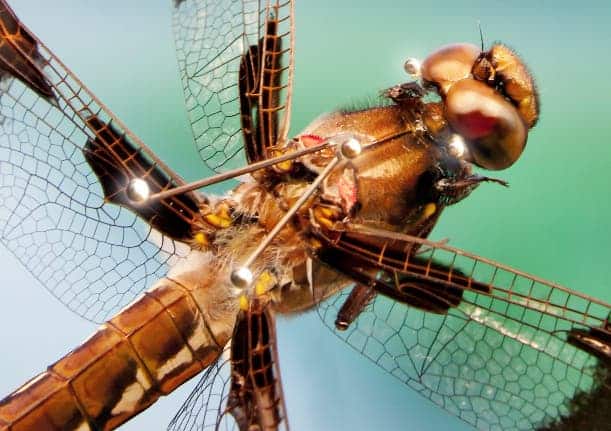Arguably the most efficient predator in the world today is the dragonfly, which boats a 95% success rate. Obviously, there’s more to the dragonfly than meets the eye or more than you would expect from some random insect, at least. One of the reasons it’s so successful may be due to how the dragonfly moves in response to its prey, guided by an internal model similar to that used by us humans. In effect, the dragonfly performs complex calculations that include both the prey’s current position and predictions of its future position.
An exciting choreography

The dragonfly only needs half a second from the moment it first sees an unsuspecting prey until it finally swaps it up from beneath (this is how the dragonfly always operates to avoid being seen). Biologists knew the dragonfly is an efficient, and awesome I might add, hunter but the complexities of its behavior escaped them. According to scientists at Howard Hughes Medical Institute’s Janelia Research Campus, dragonflies on the hunt perform internal calculations every bit as complex as those of a ballet dancer.
You might be surprised to know what great deal of effort and how billions of computations are made automatically by your brain every second just to pick up… a cup of coffee.
“You have an internal model of how your arm works, how the joints are articulated, of the cup and its mass. If the cup is filled with coffee, you incorporate that,” Janelia group leader Anthony Leonardo explains. “Articulating a body and moving it through space is a very complicated problem.”
For many years, Leonardo has been studying how the nervous system triggers actions in response to environmental stimuli, like when an animal quickly enters escape mode when it senses it’s been hunted. Dragonflies are particularly appealing for his research because he wants to know whether the same stimulus-response loops underlie more complex behaviors.
“The idea was the dragonfly roughly knows where the prey is relative to him, and he tries to hold this angle constant as he moves toward the interception point. This is the way guided missiles work and how people catch footballs,” Leonardo says. But there was reason to believe prey capture was more complicated.
“You don’t need a spectacularly complicated model to guess where the prey will be a short time in the future,” he says. “But how do you maneuver your body to reach the point of contact?”

But how do you keep up with such a fast and tiny predator? Inspired by the same techniques used in the movie business to translate the movements of actors into 3D animations, the researchers placed reflective markers on key articulated areas of the dragonfly – the head, body, and wings. A high speed cameras recorded the reflected flashes as the dragonfly chased after either a fruit fly or an artificial prey – a bead maneuvered by a pulley system. The positions of the body and head were most revealing.

It was soon clear that the dragonfly wasn’t only responding to its prey’s movements; it also made structured turns that adjusted the orientation of its body, even when the prey trajectory didn’t change.
“Those turns were driven by the dragonfly’s internal representation of its body and the knowledge that it has to rotate its body and line it up to the prey’s flight path in a particular way,” Leonardo says.
These shifts are aimed to disorientate its prey, yet during this whole process the dragonfly never loses sight of its target. Surprisingly, the scientists found that each dragonfly moved its head to keep the image of its prey centered on the eye, despite the rotation of its own body.
“The dragonfly is making a lot of turns to line itself up. Those turns create a lot of apparent prey motion. If the whole world is going to spin, how can it possibly see its prey?” Leonardo asks.
Leonardo says the movements his team observed are so fine-tuned that they keep the image of the prey fixed in the crosshairs of the dragonfly’s eyes—their area of greatest acuity—during the duration of the chase. That allows the dragonfly to receive two channels of information about its prey, Leonardo says. The angle between the head and the body tracks the predicted movement of the prey, while the visual system detects any unexpected movement when the prey strays from its position in the crosshairs.
“It gives the dragonfly a very elegant combination of predicted model-driven control and the original reactive control,” he says.
Findings appeared in Nature.


